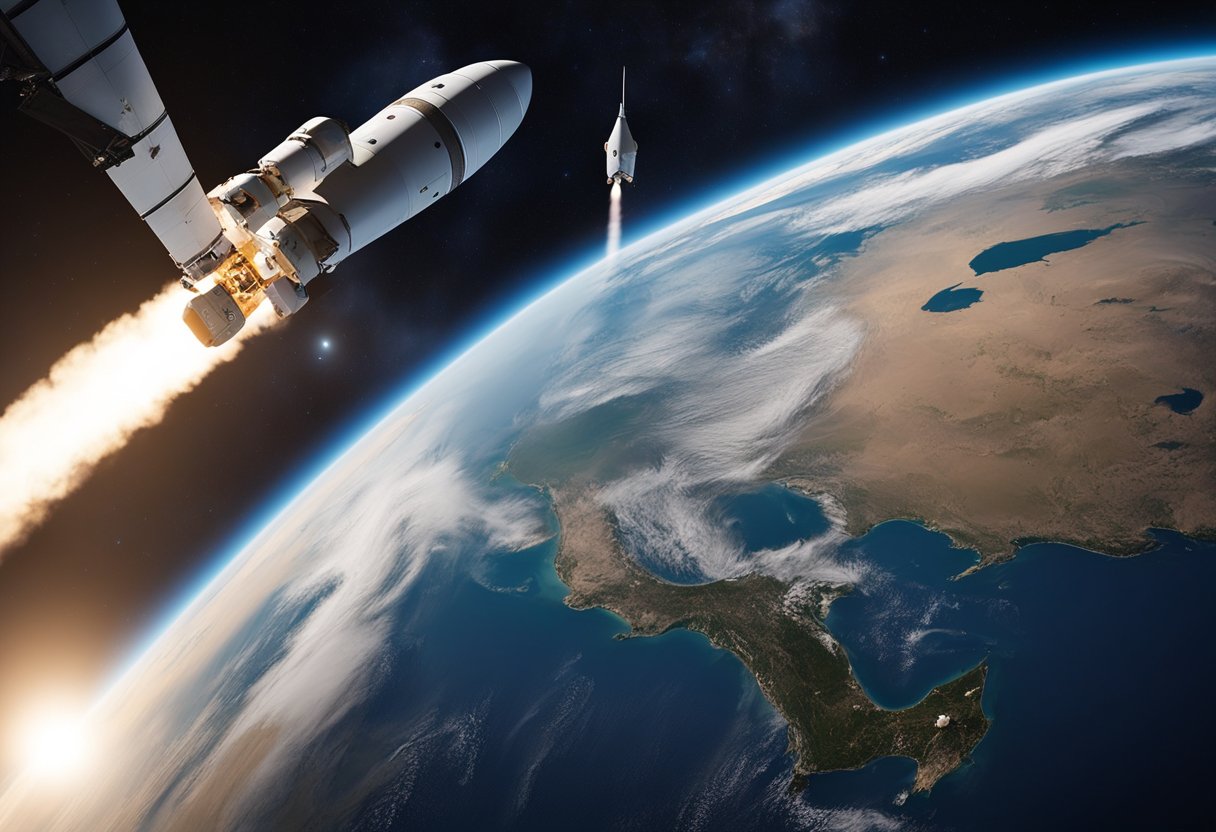
Space tourism, once a science fiction fantasy, is rapidly becoming a reality. This fascinating industry promises to open the stars to civilians, as companies and space agencies work towards making trips beyond the Earth’s atmosphere accessible. With advancements in technology and the emergence of private spaceflight companies, a variety of space-based experiences are on the horizon. From orbital vacations at the International Space Station to the possibility of lunar tourism and even Mars expeditions, the dream of space travel is inching closer to the public domain. Initiatives such as NASA’s Artemis programme aim to return humans to the Moon and lay the groundwork for future Martian exploration, while companies like SpaceX and Virgin Galactic are working to offer unique space travel experiences.
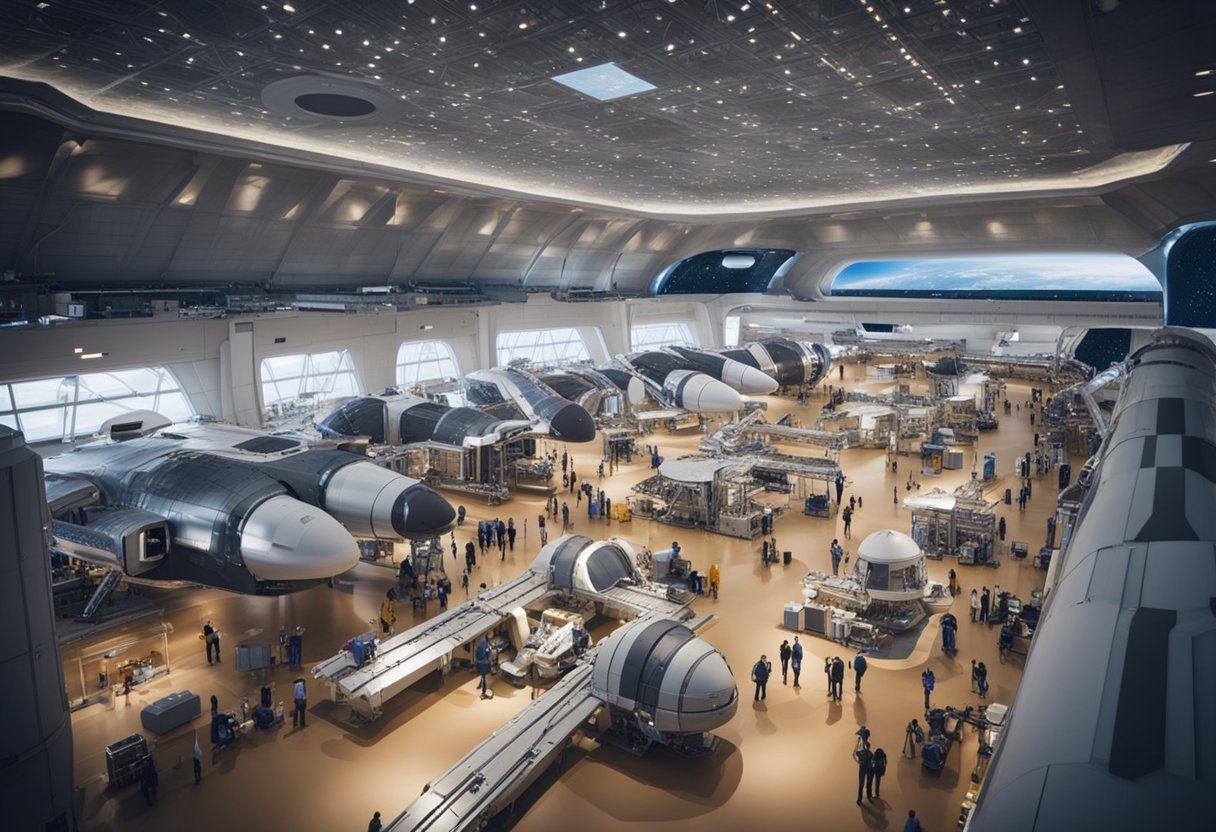
Our interest in the cosmos has led us to develop innovative spacecraft and technologies that could soon facilitate regular travel to and from space for leisure and education. We are witnessing the birth of novel travel packages including zero gravity adventures, suborbital flights, and even stays at space hotels designed for tourists. These advancements are paving the way for low Earth orbit vacations, journeys to asteroids and beyond. As we prepare for these extraordinary trips, considerations for travel requirements, safety protocols, and insurance options also come into focus, ensuring that space tourism is both exhilarating and well-regulated.
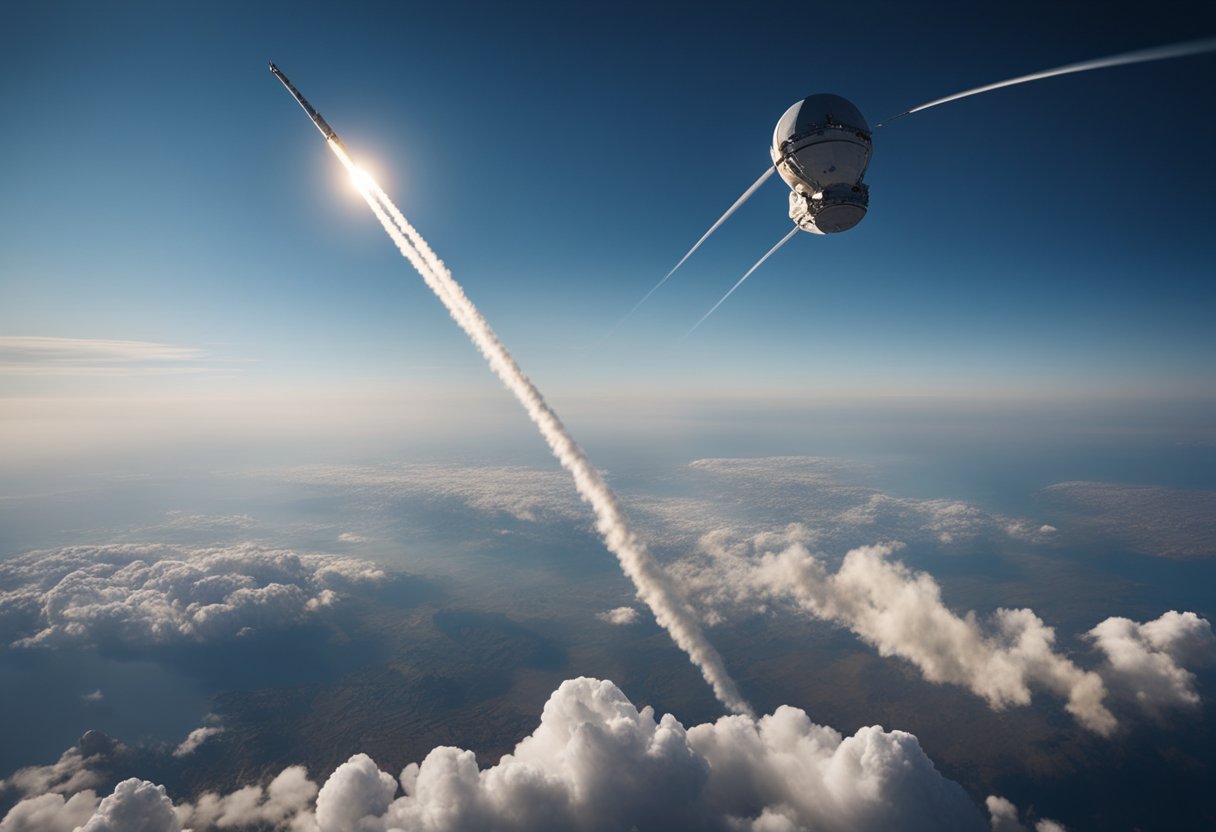
Space tourism signifies an evolving sector within the larger aerospace industry, driven by a growing interest in space exploration and recreational experiences beyond Earth. We understand space tourism as human travel into space for leisure, adventure, or unique experiences such as witnessing Earth from orbit.
Today, organisations like SpaceX, Virgin Galactic, and Blue Origin spearhead the commercial space travel movement, offering varying degrees of space exposure. Sub-orbital space tourism is the most accessible, providing brief moments of weightlessness and a glimpse of the Earth’s curvature without entering orbit. Orbital space tourism, a more advanced and prolonged expedition, involves travelling around Earth in a spacecraft. The possibility of lunar space tourism looms on the horizon, promising trips that encompass lunar orbits or landings.
The history of space tourism is relatively short but marked by significant milestones, starting with Dennis Tito’s historic voyage in 2001 aboard a Russian Soyuz spacecraft to the International Space Station (ISS). This principle of civilian visitation has prompted substantial advancements in science and technologies, enabling private entities to develop their spacecraft.
We observe keen competition among companies, which is instrumental in reducing costs and fostering innovation. Space agencies like NASA and ESA have begun to collaborate with international partners to promote the industry while considering aspects like climate change.
With our sights on sustainable and responsible growth, the commercial space travel market is continually shaping its future, balancing exhilaration with safety protocols. To future-proof this nascent industry, we embrace eco-friendly practices to ensure that our outer-space aspirations do not detrimentally affect the celestial environments we aim to explore.
Exploring the final frontier has moved from a governmental endeavour to a commercial reality. We are witnessing the birth of various corporate initiatives set to redefine our experience in space, from the International Space Station to proposed space hotels.
Visits to the International Space Station (ISS) have transitioned from an exclusive realm of professional astronauts to a once-in-a-lifetime opportunity for private citizens. Through collaborations with entities like NASA and Axiom Space, space enthusiasts can now secure a seat aboard the Soyuz spacecraft. These expeditions are substantial, as they facilitate scientific research and broaden our understanding of living in space.
Recreational travel to space has broken new ground with private spaceflight excursions. Companies such as SpaceX are working diligently to send private passengers into low Earth orbit, providing a unique view of our planet. The latest advancements in spacecraft design enhance safety and comfort for space tourists, ensuring a memorable journey.
The concept of a space hotel might seem like science fiction, yet it is fast approaching reality. Plans published by firms including the Orbital Assembly Corporation suggest that such orbital accommodations could be operational before the end of the decade. Comprising modules attached to space stations, these hotels promise zero gravity adventure trips and remarkable vistas of Earth and the cosmos.
The Lunar Gateway is an upcoming project that will act as a multipurpose outpost orbiting the Moon. Crafted through an international partnership led by NASA, the Gateway will serve as a stepping-stone for lunar and deeper space explorations. In the foreseeable future, it may also host tourists, offering unique lunar orbit experiences that rival any earthly holiday destination.
While still in the early phase, websites like SpaceVoyageVentures.com are enthusiasts’ premier source for charting these nascent space tourism initiatives. Here, one can glean insights into current and imminent excursions, encompassing everything from low Earth orbit vacations to more audacious ventures like asteroid belt expeditions.
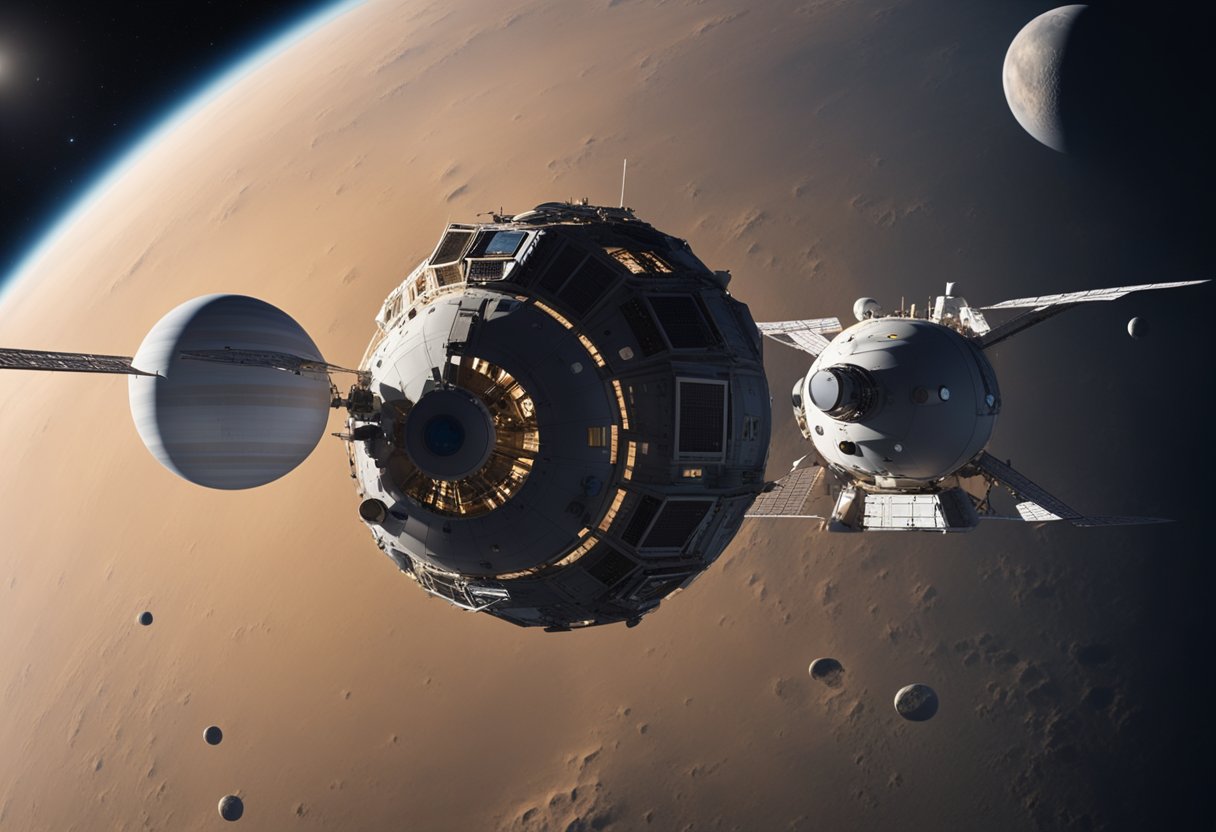
As we venture further into the cosmos, lunar tourism and Mars colonisation tours are becoming tangible possibilities. With ambitious programmes from NASA and private companies like SpaceX, we’re on the cusp of making these journeys a reality.
The allure of the moon has fascinated us for centuries, and now the lunar surface is becoming an accessible destination. With advancements in rocket technologies and lunar landers, travel packages to orbit or land on the Moon are being crafted. Companies are establishing resources to ensure a sustainable lunar presence, enabling not just a brief visit, but a deeper exploration of our celestial neighbour.
The red planet is the next frontier for human exploration. Mars colonisation tours, although more a long-term goal, are being devised with the aim of establishing a permanent human presence. Utilising the forthcoming technologies, these expeditions will rely heavily on in-situ resource utilisation to support life on Mars. The ventures we’re mapping out involve extensive preparation to ensure a viable and safe environment for pioneers of interplanetary travel.
Under the Artemis missions, NASA is paving the way for a new era of lunar exploration. Our involvement with the Artemis program opens opportunities for tourism, leveraging the Gateway space station as an outpost for future moon visits. Facilitating not just government astronauts, but also civilians, the program may soon include the option for tourists to experience lunar orbit firsthand.
SpaceX stands at the vanguard of private spaceflight, with lunar tours on the horizon. Pioneering new spacecraft, the vision is to lessen the divide between Earth and the moon, making lunar trips more routine. With SpaceX’s rockets, we’re progressing towards the reality of commercial lunar tourism, offering unique zero-gravity adventure trips and unprecedented views of both the lunar landscape and space.
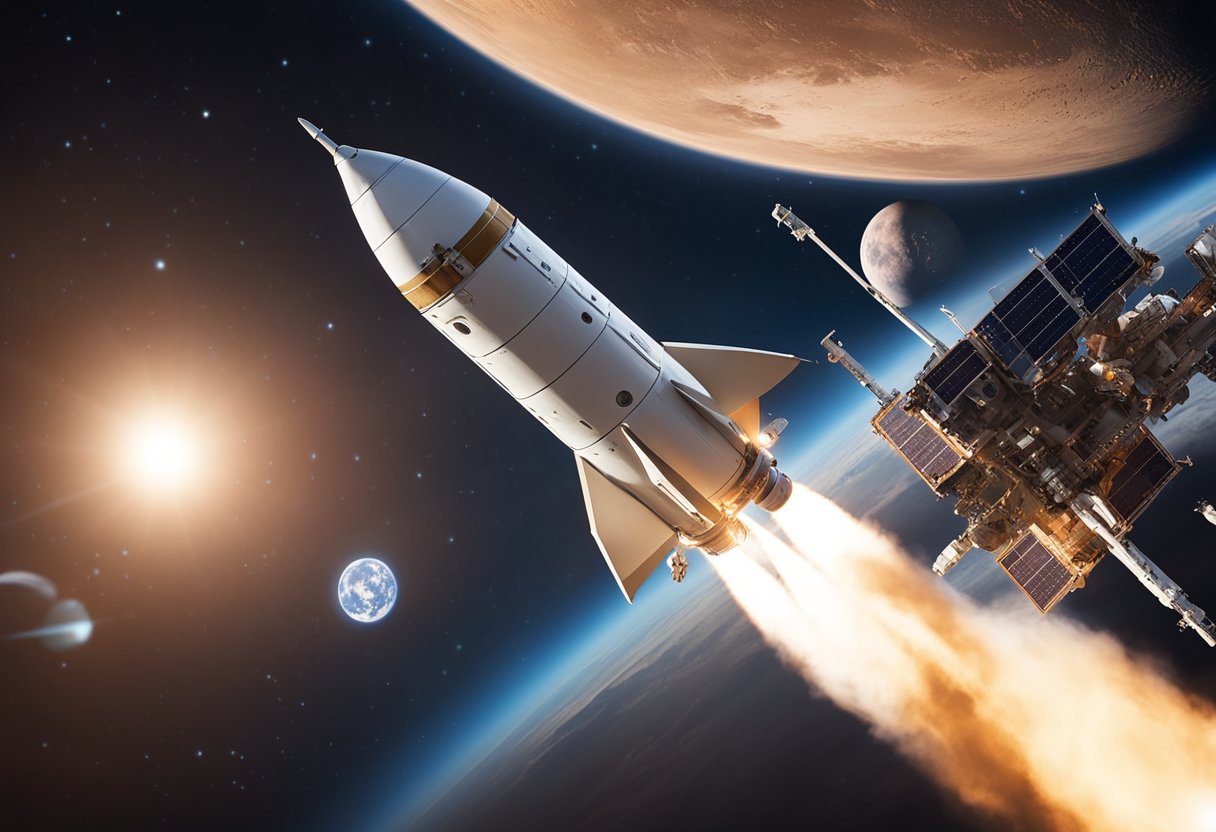
In the realm of space tourism, we are on the cusp of realising experiences that were once the preserve of astronauts and cosmonauts. We are ushering in a new era of space exploration where asteroid excursions, deep space itineraries, and celestial body tours are becoming tangible prospects for the intrepid traveller.
Voyages to asteroids offer a unique opportunity for both science and adventure. As we forge new space tourism paths, these journeys present unprecedented potential for research and the study of the solar system’s history. The near-Earth asteroids are particularly attractive destinations due to their proximity and the valuable materials they may contain. While still in the early planning stages, spacecraft designed for these missions promise a blend of scientific endeavour and touristic appeal.
Our deep space travel itineraries are carefully designed to bring the most ambitious visions of interstellar exploration to life. Venturing far beyond the Moon and into the depths of our solar system, these itineraries will harness the latest advancements in spacecraft technology. Scientific progress guides us, ensuring safety and awe-inspiring experiences. As we aim for destinations like Mars, the proposed space travel routes incorporate extended travel times that rely on life-support advances and precise engineering.
Our celestial body sightseeing tours are tailored to provide breathtaking views of sundry astronomical features within our solar system. Imagine beholding the grandeur of Jupiter’s Great Red Spot or the intricate rings of Saturn from a nearby vantage point. These tours not only capture the imagination but also contribute to a broader understanding of space, as every journey adds to our scientific knowledge. SpaceVoyageVentures.com outlines potential itineraries for visits to these remote locales, signalling the growing accessibility of space-based experiences.
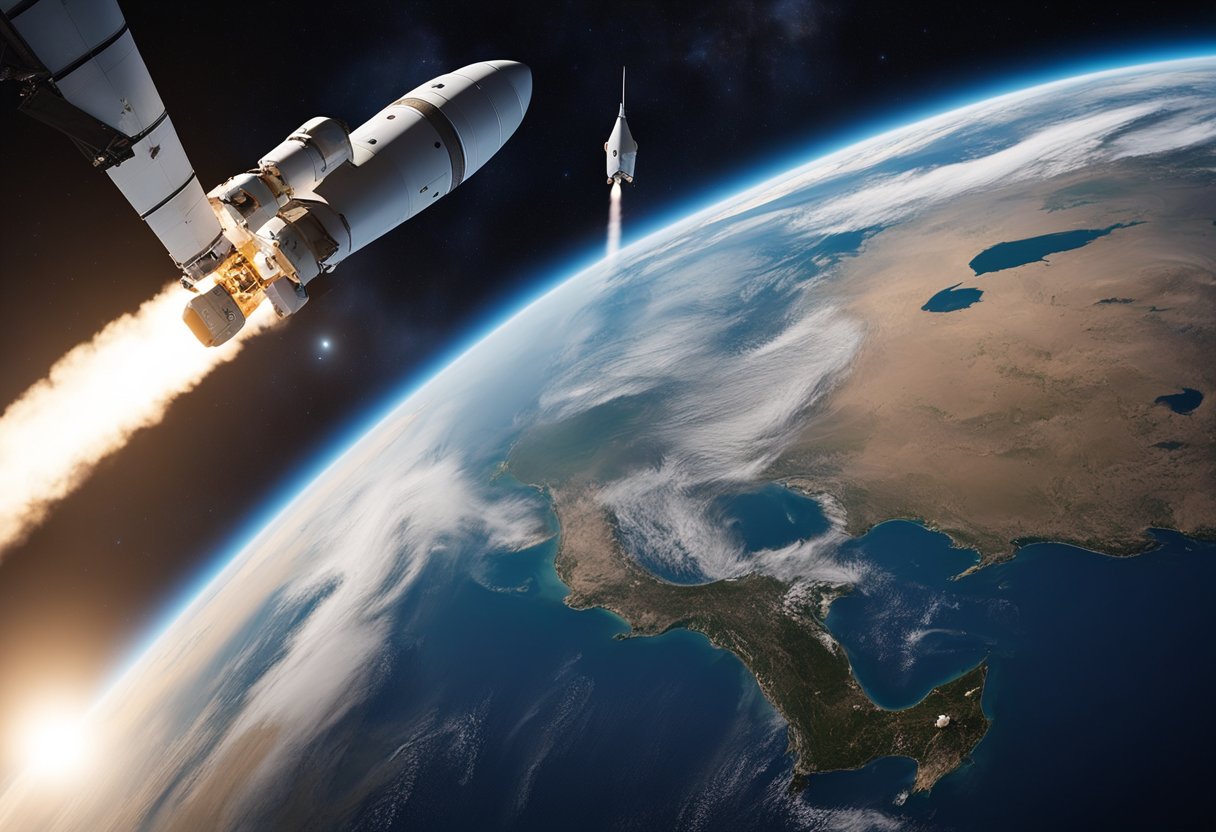
Developing and refining space travel technologies are crucial for transforming the dreams of visiting celestial bodies into a tangible reality. Our advancements in rocketry, spacecraft design, and engineering are paramount to the emerging era of space tourism.
We are witnessing the birth of a new chapter in space exploration with the evolution of next-generation spacecraft, designed to carry tourists beyond the boundaries of our atmosphere. Companies like SpaceX are at the forefront, manufacturing the Starship vehicle, a fully reusable spacecraft aiming to transport humans to the Moon, Mars, and beyond. Concurrently, Blue Origin’s New Shepard rocket offers suborbital flight experiences, allowing travellers to relish the awe of space for a few precious minutes.
From the Orion capsule built by NASA for deep space expeditions, to the technologies that allowed private companies to enter the once government-dominated space race, we see considerable progress. Private companies are not just participants but crucial drivers in this sector, endeavouring to construct sustainable models for orbital vacations. These advances are integral to our efforts to ensure the safety and accessibility of space travel, by developing state-of-the-art life support systems and launch technologies that our engineers tirelessly work on.
Through new spacecraft that rockets into the cosmos representing our latest builds, to innovations in human spaceflight that pave the way for celestial experiences, our commitment is to make space more accessible for everyone. As we look to the future, websites like SpaceVoyageVentures.com serve as a beacon, highlighting our journey towards universal spaceflight opportunities.
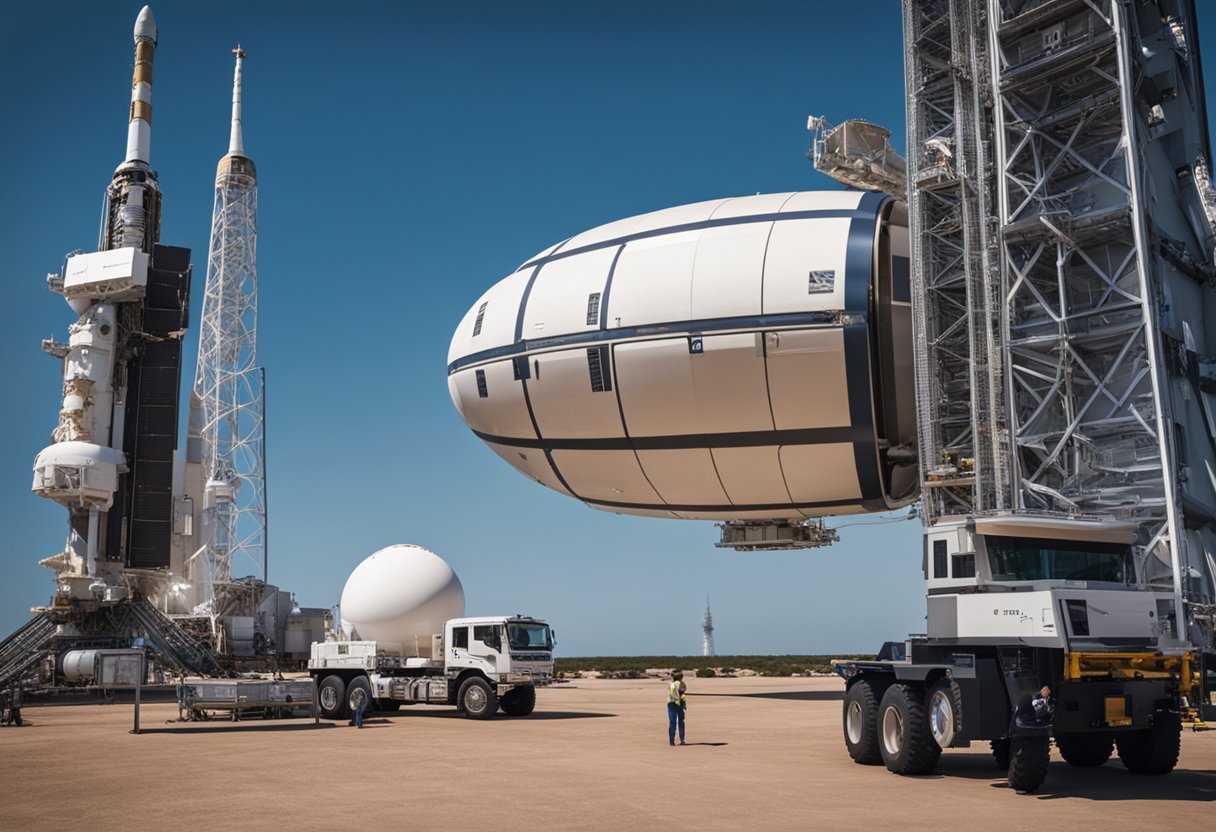
When embarking on the journey of a lifetime to the cosmos, we must consider the legalities and personal necessities critical for space travel. Obtaining the correct documentation, securing appropriate insurance, and selecting tailored experiences are foundational steps for every aspiring astronaut.
Securing a visa for space tourism is contingent upon the destination and the regulations set by the entity overseeing the airspace. As defined by the Federal Aviation Administration (FAA), space begins at the Kármán line, 100 kilometres above Earth’s surface. Regulations concerning these areas remain under constant development. Subsequently, we advise checking with SpaceVoyageVentures.com for the latest legal details and policies regarding tourism visa requirements for your celestial destination.
Considering the inherent risks associated with space travel, insurance is a non-negotiable aspect of our preparations. A comprehensive space tourism insurance package will protect against potential accidents and health issues. Policies should include coverage for trip cancellations, medical emergencies, and repatriation. Refer to the latest law and regulations, for guidance on the minimum mandatory coverage required for tourists leaving Earth’s atmosphere.
Weightlessness is a novel and thrilling component of space tourism; however, training for such an experience is paramount. We offer various weightlessness experience packages to acclimatise travellers to zero gravity, mitigating the risk of space sickness. Programmes range from parabolic flights to extended stays at simulated zero-gravity environments. For more details on these packages, visit SpaceVoyageVentures.com, where we document both current and upcoming opportunities.
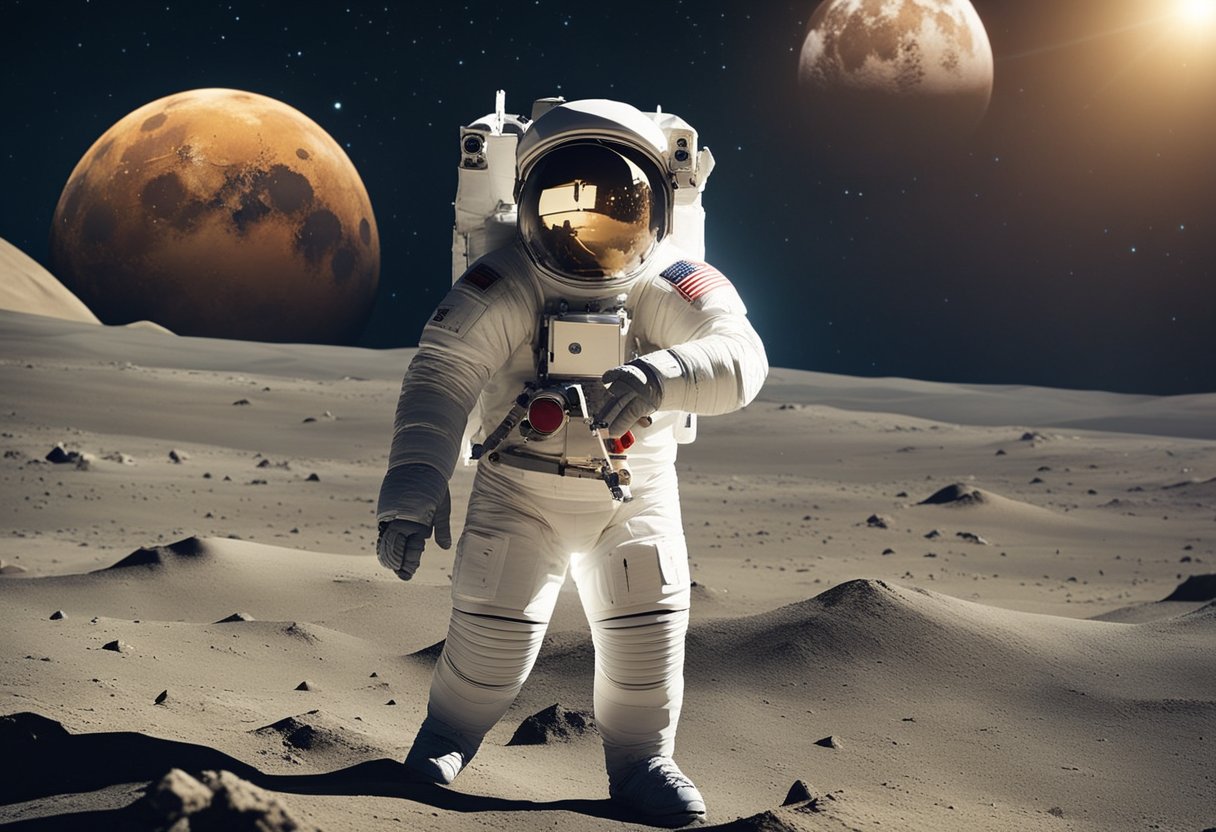
As pioneers in the realm of extraterrestrial expeditions, we understand that the allure of space tourism lies in the unique experiences and activities it offers. Embracing the weightlessness of space, embarking on awe-inspiring spacewalks, and navigating through interplanetary landscapes, each activity is meticulously designed to maximise your adventure beyond Earth’s atmosphere.
Zero gravity adventure trips provide an exhilarating sensation akin to that felt by astronauts in orbit. By embarking on a specifically designed aircraft trajectory known as a parabolic flight, guests experience the sheer joy of weightlessness, floating freely inside the aircraft’s cabin. These short-duration flights are a great introduction to the astronaut experience without the commitment to a full orbital journey.
Spacewalk tourist expeditions are the pinnacle of space tourism activities. During these guided tours, participants don a spacesuit and step outside the safety of their spacecraft or space station to witness the majesty of the cosmos first-hand. Conducted under the strict supervision of professionals, our spacewalk adventures offer a once-in-a-lifetime opportunity to perform tasks similar to those of real astronauts, all while enjoying breathtaking views of Earth against the vastness of space.
For the truly adventurous, our comprehensive interplanetary travel guides prepare you for journeys to celestial bodies beyond Earth’s orbit. These expeditions, ranging from lunar orbit experiences to Mars habitat excursions, highlight the intricate planning and training needed for long-duration space travel. Our guides cover essential topics like space travel time, habitation in microgravity, and safety protocols, ensuring a well-informed and secured travel experience through the cosmos.
Embarking on these extraordinary journeys, our guests encounter the best of space exploration. Let us at SpaceVoyageVentures.com usher you into this new frontier, where out-of-this-world experiences await.
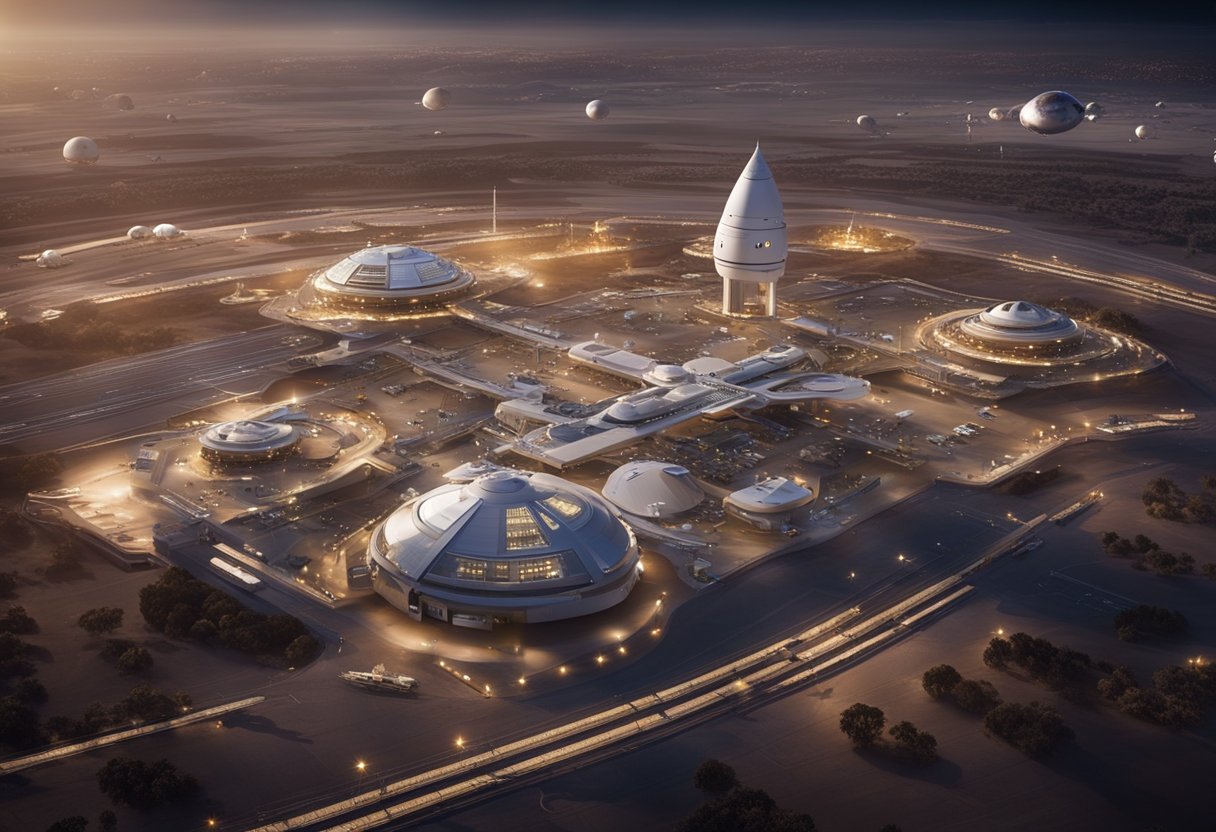
With the advent of commercial space travel, significant progress in infrastructure has been made to support space tourism. From specialised launch sites to tours that offer a glimpse of space preparation, we are witnessing the birth of a new era in travel.
Space tourism relies heavily on the existence of specialised launch sites designed to accommodate the unique needs of space-bound rockets. These sites facilitate not only the rockets’ safe ascent into orbit but also provide critical support structures for crew and tourists. For instance, Spaceport America in New Mexico has become a hub for suborbital flights, offering state-of-the-art facilities for launch providers like Virgin Galactic.
At Spaceport America, we find a synergy of tourism and space exploration. Tours provide visitors with the opportunity to explore the grounds, get up close to the launch areas, and learn about the operations behind space missions. This experience not only educates the public but also ignites interest in space tourism among visitors.
The Kennedy Space Center, located in Florida, is one of the most iconic spaces linked to space exploration. Not only has it been the launch site for historical missions, but it also serves as a crucial component in the infrastructure supporting future space tourism. Excursions to the center allow us to trace the steps of astronauts and preview the integration of traditional space operations with commercial tourism efforts.
As we embark on the era of space tourism, it’s imperative that we address the pressing concerns of safety, sustainability, and ethics. These issues are not merely afterthoughts but are at the core of ensuring that space travel can be a viable and responsible venture.
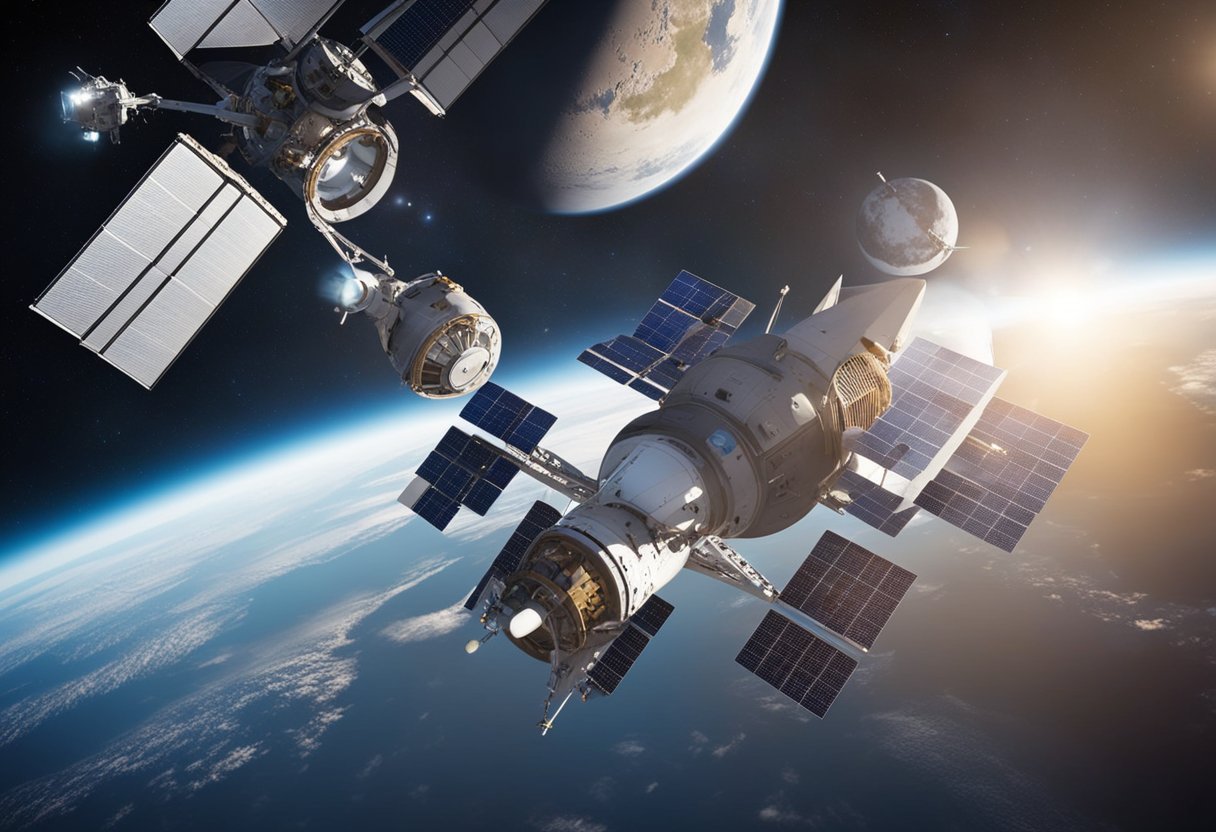
We understand the immense risks associated with space tourism. Adhering to stringent safety protocols is fundamental. Agencies like the Federal Aviation Administration (FAA) are at the forefront, implementing regulations that govern commercial spaceflight. Such measures include rigorous astronaut training, the certification of spacecraft for human flight, and contingency planning for emergencies. Space tourism companies must comply, conducting thorough risk assessments and safety drills.
Recent incidents remind us of the inherent dangers of space travel. Hence, ongoing research and science play critical roles in developing newer, safer technologies. Our commitment to safety extends beyond our spacecraft; we must ensure that launches and landings pose minimal risk to the uninvolved public.
As we push the boundaries of human experience into space, we carry a responsibility to protect our planet’s environment. Climate change is a stark reminder that our actions have consequences. Space travel and tourism must not exacerbate the problem.
Our approach involves propelling the industry towards more sustainable practices. This includes the utilisation of eco-friendly rocket fuels, reducing the carbon footprint of space missions, and minimising the space debris that contributes to orbit congestion. Prestigious space agencies are conducting research into how space tourism can align with Earth’s environmental needs.
We, at SpaceVoyageVentures.com, continually document these advances, believing that ethical space travel is not just about reducing harm but also contributing positively to our collective knowledge and the sustainability of our home planet.
Over recent years, space tourism has evolved from a futuristic fantasy into a burgeoning industry, with several pioneering companies charting new destinations beyond Earth’s atmosphere. Amidst this growth, key destinations and milestones are shaping the trajectory of this exciting field.
Our gaze into the cosmos reveals a variety of future space tourism spots set to become reality. The moon serves as an enthralling destination with planned lunar orbit experiences and the potential establishment of lunar bases that may one day host tourists. Meanwhile, Mars expeditions are on the horizon, with ambitious proposals to not only visit but also to establish permanent human presence through colonisation tours. Adding to the allure are the possibilities of zero gravity adventure trips and stays in luxury space hotels currently under development.
We are witnessing an unprecedented expansion in commercial space travel routes. Private companies such as SpaceX and Virgin Galactic are spearheading this revolution. SpaceX lunar tours are expected to become a staple, leveraging on technologies honed through their various missions. Virgin Galactic, on the other hand, is refining suborbital flight experiences, a first step toward more ambitious celestial journeys. The development of the Gateway space station also hints at future holidays that orbit the moon, offering a stepping stone for deeper space exploration.
Tracking the space tourism milestones helps us understand this sector’s rapid advancement. Historical space sites tours link us to our rich heritage in space exploration, while recent advancements mark the readiness of the industry for mainstream consumers. For example, the fruition of the Artemis program will not just be a scientific leap but also a milestone in moon tourism. We’ve also seen important regulatory updates paving the way for space tourism visas, an essential step in formally establishing space travel as a component of the global space economy.
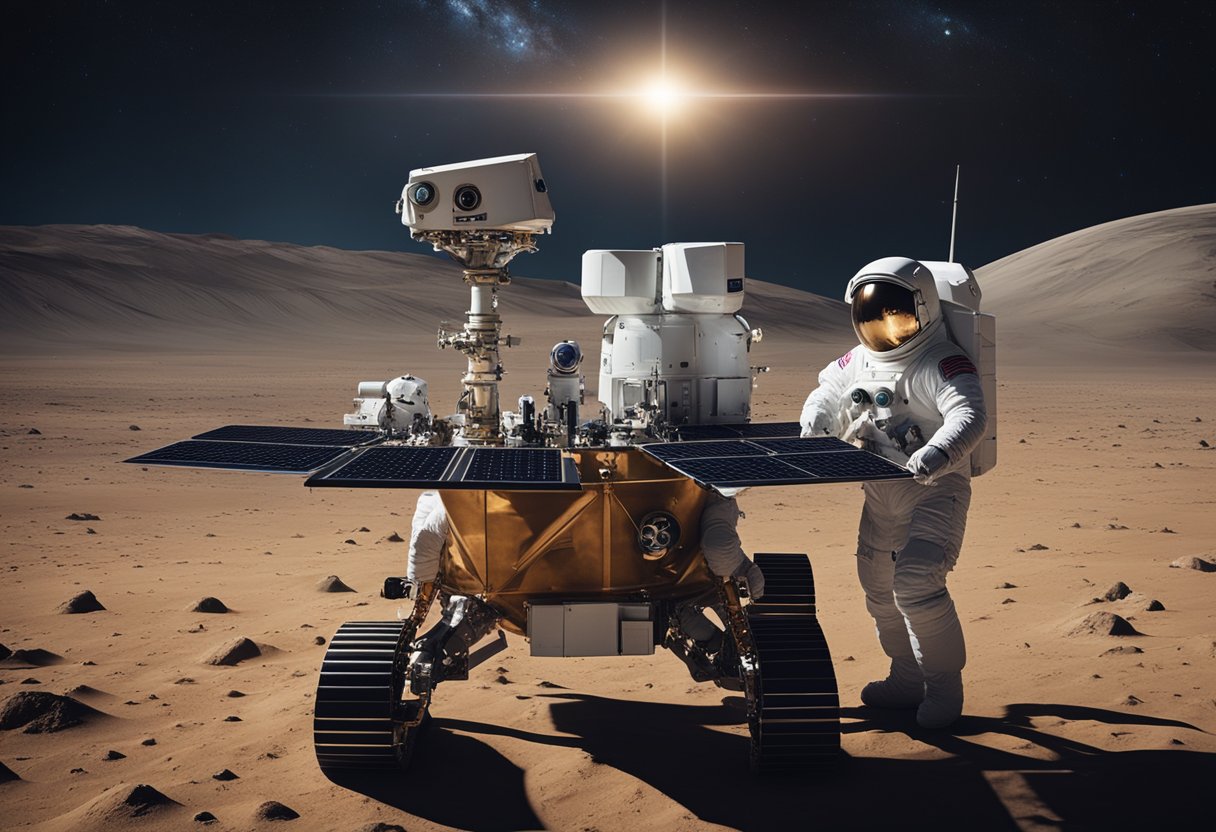
We’ve curated a selection of common queries about space tourism to provide you with a clear understanding of this burgeoning industry.
Space tourism involves civilian travellers embarking on journeys beyond Earth’s atmosphere. Notable companies paving the way include SpaceX, with ambitions for lunar tourism, and Virgin Galactic, focusing on suborbital flights.
Costs can vary widely, however, suborbital trips with Virgin Galactic are around $250,000 USD, while orbital excursions, such as those to the International Space Station, can exceed tens of millions of USD.
Private individuals who travel to space can be considered space tourists or commercial astronauts. They typically undergo months of intensive training, including spacecraft operations and emergency preparedness.
Currently, tourists can experience suborbital flights, with expectations set on future orbital, lunar, and deep space travel itineraries, as technology and accessibility advance.
Dennis Tito is recognised as the first orbital space tourist, having travelled to the International Space Station in April 2001.
Lunar tourism isn’t available quite yet, but with advancements like the Artemis program and companies like SpaceX developing lunar-capable craft, it’s a goal on the near horizon, set to be a profound leap in space travel offerings.